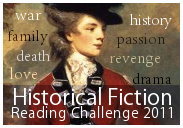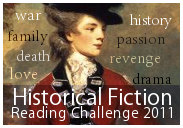 Teaser Tuesdays is a weekly bookish meme, hosted by MizB of Should Be Reading. Anyone can play along! Just do the following:
Teaser Tuesdays is a weekly bookish meme, hosted by MizB of Should Be Reading. Anyone can play along! Just do the following:
- Grab your current read
- Open to a random page
- Share two (2) “teaser” sentences from somewhere on that page
- BE CAREFUL NOT TO INCLUDE SPOILERS! (make sure that what you share doesn’t give too much away! You don’t want to ruin the book for others!)
- Share the title & author, too, so that other TT participants can add the book to their TBR Lists if they like your teasers!
My teasers:
[amazon_image id=”0670022527″ link=”true” target=”_blank” size=”medium” class=”alignleft”]One of Our Thursdays Is Missing: A Novel[/amazon_image]“About ten degrees upslope of Fiction, I could see our nearest neighbor: Artistic Criticism. It was an exceptionally beautiful island, yet deeply troubled, confused and suffused with a blanketing layer of almost impenetrable bullshit.”
—location 241 on Kindle, [amazon_link id=”0670022527″ target=”_blank” ]One of Our Thursdays Is Missing: A Novel[/amazon_link] by Jasper Fforde
A truer description of criticism, whether you are talking art or literature, I have never seen. I love Jasper Fforde. Incidentally, here is a map of Fiction Island, but Artistic Criticism is not pictured.













